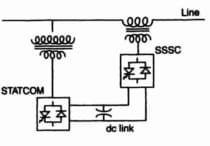 |
| Basic Electrical |
1. Assertion(A): Elements like resistances, inductances
and capacitances are linear elements.
Reason(R): A circuit or network whose parameters are
always constant irrespective of the change in time, voltage, temperature etc.
Is known as a linear network.
a. Both A and R
are true and R is the correct explanation A.
b. Both A and R are true but R is not the correct
explanation of A.
c. A is true but R is false
d. A is false but R is true
2. Assertion(A): A network in which the circuit elements
like resistance, inductance etc. Cannot be physically separated for analysis
purposes, is called lumped network.
Reason(R): Most of the electric networks are lumped in
nature.
a. Both A and R are true and R is the correct explanation
of A
b. Both A and R are true but R is not the correct
explanation of A
c. A is true but R is false
d. A is false but
R is true
3. Assertion(A): KCL states that at any node of a
circuit, at any instant of time, the sum of incoming currents is equal to the
sum of outgoing currents.
Reason(R): KCL indicates the law of conservation of
energy
a. Both A and R are true and R is the correct explanation
of A
b. Both A and R are true but R is not the correct
explanation of A
c. A is true but R
is false
d. A is false but R is true
4. Three resistors of R Ω each are connected to form a
triangle. The resistance between any two terminals willbe_______.
a. R Ω
b. 3R Ω
c. (2/3)R Ω
d. (3/2) R Ω
5. A network has 10 nodes and 17 branches. The number of
different node pair voltage would be______.
a. 10
b. 45
c. 7
d. 9
6. Kirchhoff’s law are not applicable to circuits
with________.
a. Passive elements
b. Lumped parameters
c. Distributed
parameters
d. Non-linear resistances
7. Consider the following statements:
1. Solution of an electric circuit will give the same
result whether the source is treated as a voltage source or a current source.
2. According to kirchhoff’s voltage law, at any junction
of an electrical network, sum of incoming currents is equal to sum of outgoing
currents.
3. If a network has 4 nodes and 3 independent loops, then
the number of branches in the network will be 5.
Which of the above statements is/are true?
a. 1 only
b. 1 and 3 only
c. 2 only
d. None of these
8. Of the two methods of loop and node variable
analysis_________.
a. Loop analysis is always preferable
b. Node analysis
is always preferable
c. Loop analysis may be preferable in some situations
while node analysis may be preferable in other situations.
d. There is nothing to choose between them
9. An electric circuit with 8 branches and 4 nodes will
have________.
a. 7 loop equations
b. 3 loop equations
c. 11 loop equations
d. 5 loop
equations
10. In nodal analysis, if there are N nodes in the
circuit, then how many equations will be written to solve the network?
a. N – 1
b. N
c. N + 1
d. N – 2
11. In the node voltage technique of solving networks,
choice of a reference node does not
1. Affect the operation of the circuit
2. Change the voltage across any element
3. Affect the pd between any pair of nodes
4. Affect the voltages of various nodes
Which of the above statements is/are true?
a. 1 only
b. 2, 3 and 4 only
c. 2 and 4 only
d. 1 and 3 only
12. Nodal analysis is based on______.
a. KCL
b. KVL
c. Both (a) and (b)
d. Law of conservation of energy
13. Superposition theorem is applicable only to network
that are______.
a. Non-linear
b. Linear
c. Time-invariant
d. Passive
14. For which of the following, Thevenin’s and Norton’s
equivalents can’t be developed?
a. DC independent sources
b. AC independent sources
c. Independent and
dependent sources
d. Independent and dependent sources with all controlling
current and voltage contained within the network whose equivalent is being
developed
15. In which of the following it is not desired to attain
the condition of maximum power transfer?
a. Electronic circuits
b. Communicational circuits
c. Computer circuits
d. Electric
circuits





0 Comments
If you have any doubt, feel free to ask.